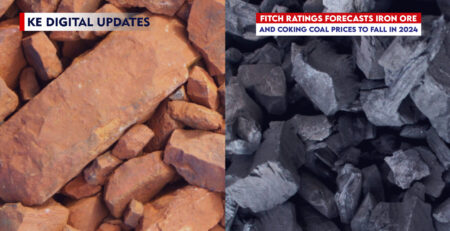The European Union remains one of the largest exporters of ferrous scrap globally. It plays a critical role in supplying raw materials to countries that heavily rely on recycled steel for their industries. In the first two months of 2025, EU exports of ferrous scrap amounted to nearly 3 million tons, marking a slight decline of 0.1% compared to the same period in 2024. Despite this marginal decrease, demand for EU scrap remains strong in key import markets.
Major Importers and Export Trends
Turkey continues to dominate as the leading destination for EU ferrous scrap, importing over 66% of total shipments. In January-February 2025, Turkish buyers secured 1.96 million tons of scrap, though this represented a 2.2% year-over-year decline. Other significant importers included Egypt, India, and Pakistan, with varying trends in scrap demand:
Egypt imported 252.98 thousand tons, down 26.3% from the previous year.
India sharply increased its imports to 176.66 thousand tons, a 95.3% surge year-over-year.
Pakistan also saw notable growth, acquiring 125.31 thousand tons, up 63.8% compared to 2024.
These four countries collectively accounted for 84% of EU ferrous scrap exports, reinforcing their pivotal role in global trade.
In February 2025, the EU exported 1.62 million tons of scrap, marking a 15.3% year-over-year increase and a 19.3% rise compared to January. Shipments to Turkey increased by 17.5% compared to February 2024, while Pakistan recorded a monthly growth of 37%. These fluctuations highlight changing market dynamics and evolving scrap demand across different regions.
Structural Changes in the Global Scrap Market
The ferrous scrap market transforms significantly as governments impose stricter export regulations worldwide. Many nations recognize scrap as a strategic resource for decarbonization and sustainable steel production. As a result, various restrictions are being introduced to safeguard domestic steel industries and promote green metallurgy.
The European Union, as the world’s leading scrap exporter, is expected to implement new trade barriers by the end of 2025. Additionally, the bloc plans to prohibit exports to non-OECD countries that fail to meet environmental standards by 2027. This regulatory shift may cause supply shortages, with estimates suggesting a potential global deficit of up to 15 million tons by 2030.
Impact on Steel Production
Despite shifting market conditions, EU steel production witnessed a slight increase in 2024, rising by 2.6% to 129.5 million tons. Meanwhile, global steel output experienced a marginal decline of 0.9% year-over-year, totaling 1.84 billion tons. These figures indicate contrasting trends between EU and global production levels, influenced by raw material availability, environmental policies, and economic conditions.
Outlook
With ongoing trade policy changes and the increasing recognition of scrap as a critical resource for green steelmaking, the EU scrap industry is poised for further evolution. While export destinations like Turkey remain significant players, regulatory constraints and domestic consumption trends may reshape global trade flows in the coming years. If scrap shortages materialize as projected, market dynamics could shift dramatically, affecting steel production and pricing worldwide.
As 2025 progresses, industry stakeholders will closely monitor regulatory developments and trade patterns, preparing for adjustments that could define the future of scrap exports and steel manufacturing on a global scale.







Leave a Reply